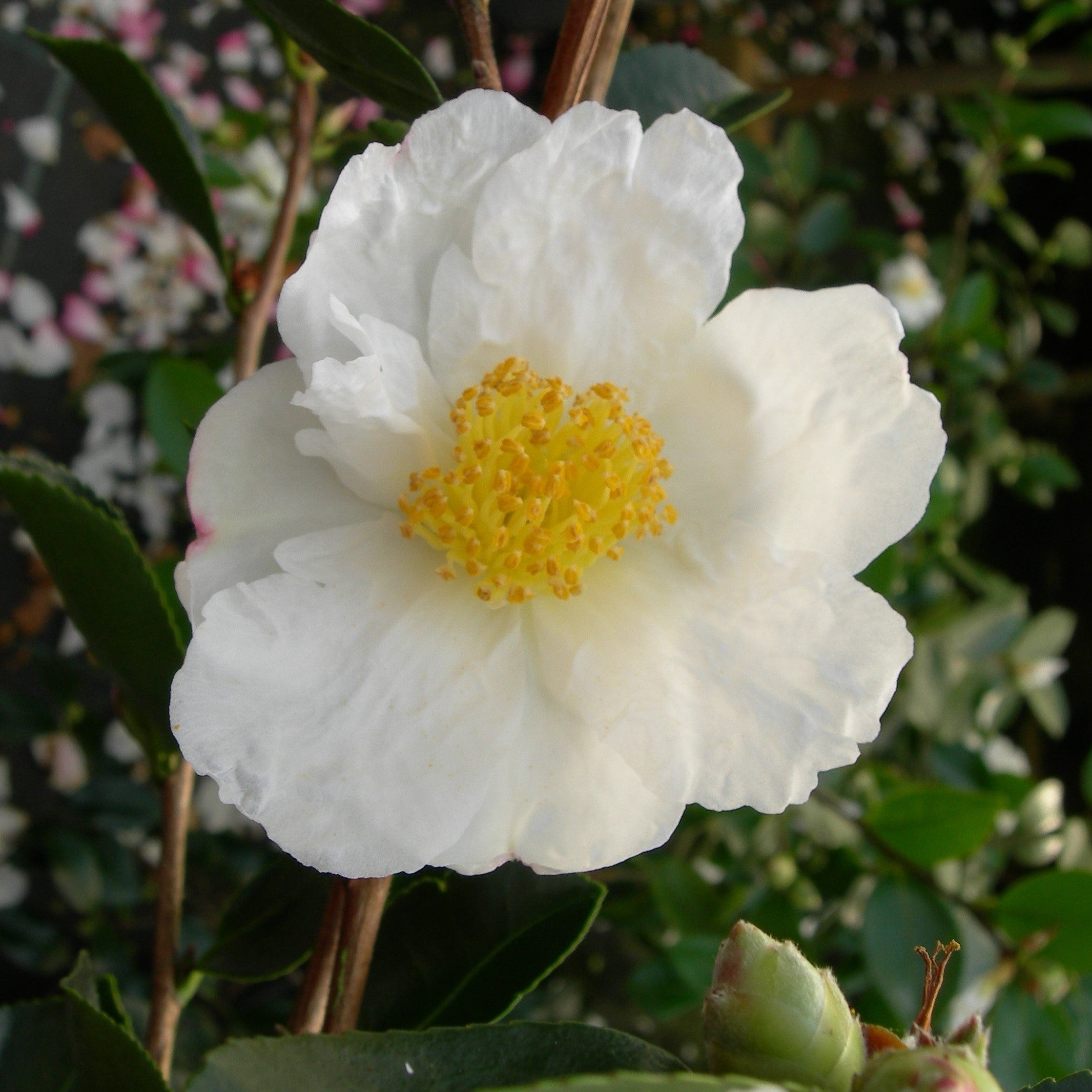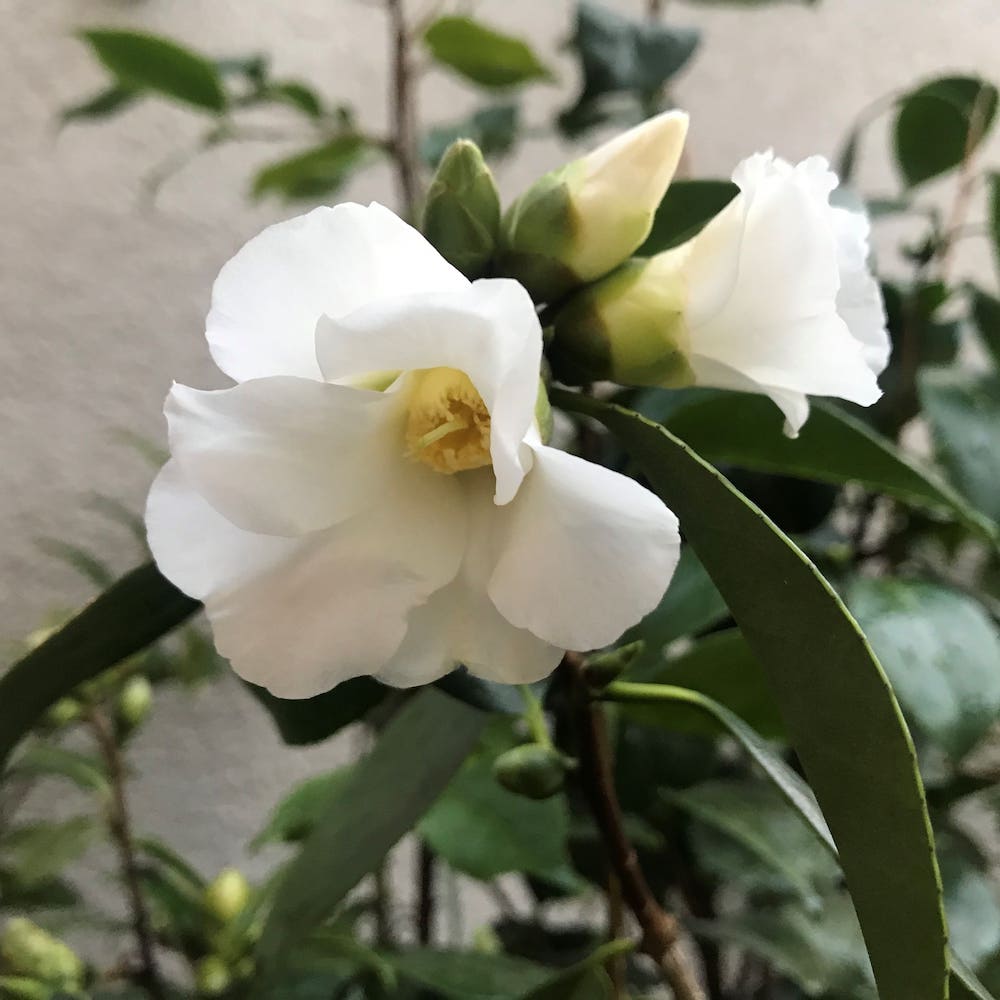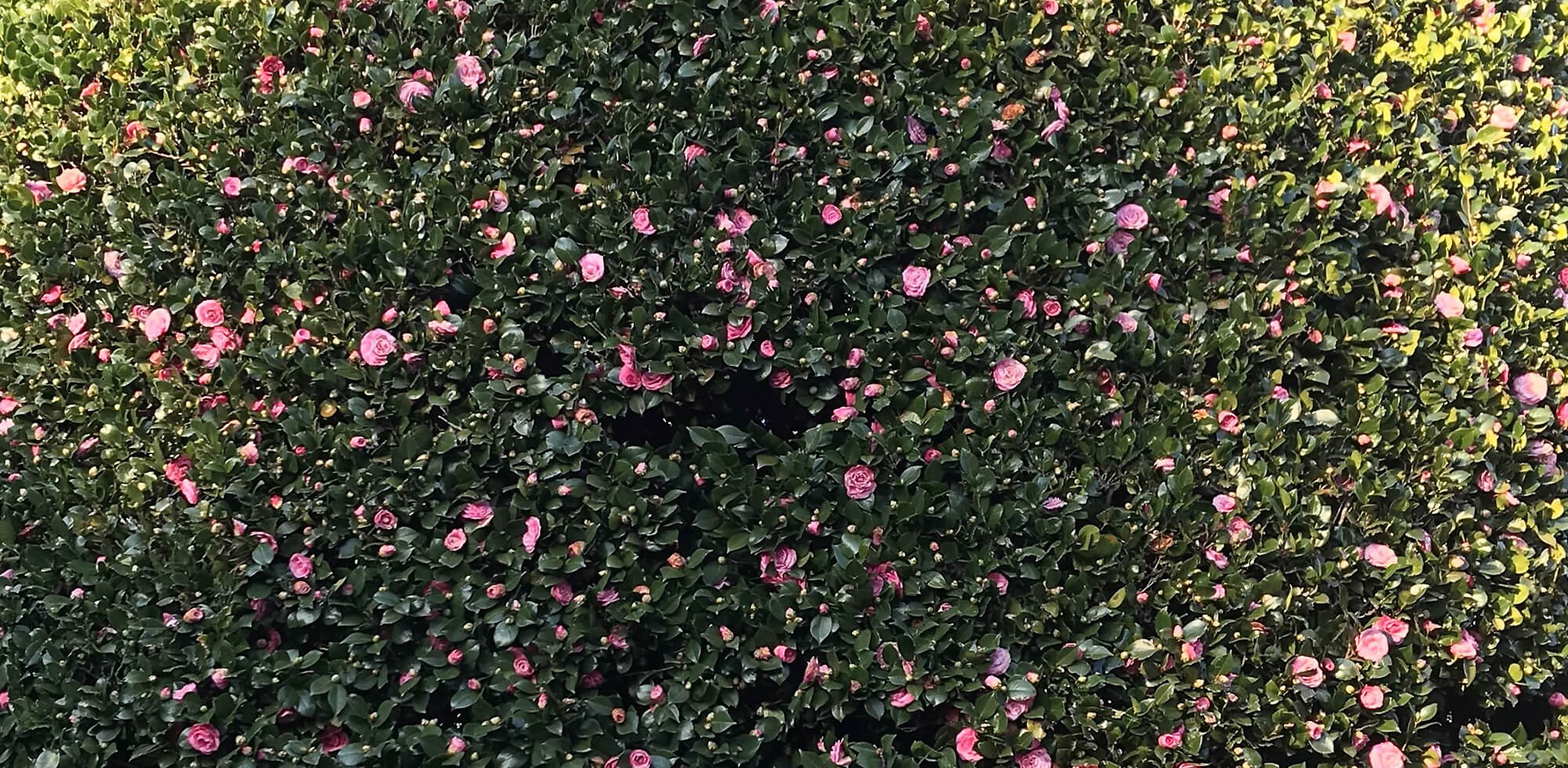Now in May, the crucial growing phase of camellias begins, during which they should be carefully tended.
Along with the new growth, which is already visible in many varieties, the flower buds for the next year are now being formed. It is essential to water camellias regularly during this period, ensuring that the root ball never dries out, as this can lead to the loss of next year's blooms.
I am often asked how frequently camellias should be watered. This depends, of course, on the size of the plant, its location, the garden's microclimate, and the weather conditions. In general, it is better to water thoroughly once rather than frequently in small amounts. This applies to other plants as well, but camellias in pots require particularly careful attention. Be sure to avoid waterlogging. A drainage pad, like the one we offer, or a drainage layer made of clay pebbles or lava rock can help. Avoid using a saucer and instead, place the pot on small feet.
From now until the end of July, fertilize once a week with a special nitrogen-rich camellia fertilizer to provide the camellias with all the necessary nutrients. It is important that fertilization is done on moist soil, preferably in the morning or evening, and not during the midday heat. In August, switch to a potassium-rich fertilizer to support the maturation of new growth and flower buds before winter. We offer a suitable camellia fertilizer set for this purpose. After that, no more fertilization is needed until the following spring.
Those who wish to prune camellias should do so during or immediately after flowering. This way, you avoid cutting off the newly forming buds, which are not yet visible. Pruning should be done 2-3 cm above the axil, allowing you to correct the plant’s shape and encourage stronger branching in younger plants. Topiaries are often seen in Portugal and Spain; one is amazed at conical shrubs and trees or precisely trimmed hedges.
For planting, use a humus-rich substrate with a slightly acidic pH, ideally around 5.5. If the pH is significantly higher, you should use rhododendron soil, mixed with one-third of your garden soil. The planting hole should be at least twice the size of the camellia's pot, and the plant should not be planted deeper than it was in the pot. As shallow-rooted plants, camellias should be protected with a thick layer of mulch around the root zone, which helps prevent drying out in summer and protects from frost in winter. The mulch should be spread with some distance from the trunk to prevent bacterial growth.
If you have chosen a wind-protected, partially shaded location for your camellias, they should thrive very well.
Camellia japonica "Midnight Magic" (pictured above) with buds, flowers and new growth on May 1st, 2020




